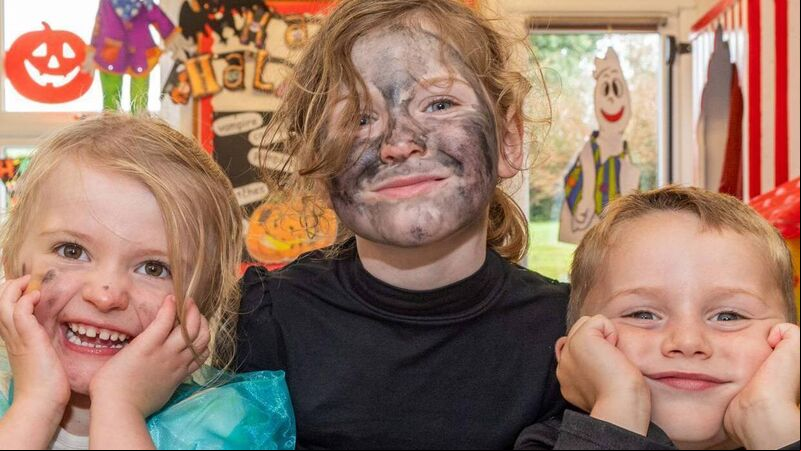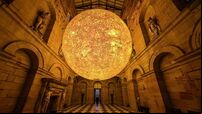Listen up, Yanks... here’s why Halloween belongs to the Irish

In the USA – which tends to behave as if it actually invented Halloween - families will visit haunted house attractions, dress up as zombies, buy loads of yellow-and-black plastic junk, eat candy corn, get lost in corn mazes, drink pumpkin-spice lattes, and dress their unfortunate pets in Hallowe’en-themed dog costumes. It’s a billion dollar business there.
But Halloween is not, and never was, an American invention.
Samhain, it’s believed, was celebrated on this island even before the arrival of the first Celts around 2,500 years ago. One of the reasons for this is because the entrance age to the Mound of the Hostages on the Hill of Tara is directly aligned with the rising sun around Samhain. And the Mound is believed to be up to 5,000 years old.
So, Disney, put that in your Mickey Mouse pipe and smoke it.
Traditionally celebrated on October 31, Halloween was the main event of the Celtic Festival of Samhain which ran from October 31 to November 1.
It marks the end of the growing season and the arrival of the cold, dead time, the winter season.
Or, depending how you look at it, Samhain could also of course be said to mark the beginning of the beginning of the new growing season.
At any rate, it’s a watershed; a window of time between the old world and the new, surrounded by mythology and loaded with symbolism, a time when the division or veil between our world and the otherworld is at its thinnest, allowing spirits of all kinds to through.
We can speculate that this may be how America got its paws on the concept of Hallowe’en and turned it into the massive money-making machine it is today.
According to Cork-based author John Gilroy, who has written extensively about pre-Celtic and Celtic Ireland, the significance of Samhain in the Ireland of ancient times was absolutely huge; it was, he says, equivalent to New Year’s Eve.
Samhain essentially marked the end of the old Celtic year, and the beginning of the new one, but here’s where it all tends to gets a bit more complicated (and please forgive me if I boil it all down a bit too simplistically.)
Samhain, Halloween, and all the customs and traditions around it was probably a response to a deep anxiety, a fear even, in early humans about the decline in the strength of the sun as autumn turned to winter.
All the world, it seemed, was now in darkness.
Fire was a way for the ancient people to reassert their sense of normality.
Tlachtga, named after the Sun Goddess Tlachtga, near the town of Athboy in Co Meath, is one of the main hills associated with Samhain in Celtic Ireland. (The other was the Hill of Tara.)
At Samhain, a great fire was lit on Tlachtga in honour of the druid and Sun God, Mogh Ruith (father of Tlachtga) to symbolise the reassuring victory of light (the sun) over the darkness of winter; a statement that all was well in the world.
The great fire at Tlachtga pushed back the darkness that had consumed the land as the sun descended into the underworld and the dead crossed the thinning boundary line between our world and the underworld. They were believed to have been led by Donn, the Lord of the Underworld, who left his dark abode off the Kerry coast to stalk the land as the power of the sun faded.
Donn (meaning brown, shadowy, dismal, etc) is said to have been the commander of some of the first invaders of Ireland. Legend has it that he drowned in a shipwreck and lies buried on the bleak Skellig Islands off the coast of Kerry. The place of his burial became known as Tech Donn, or the House of Donn.
At any rate, around Hallowe’en, as the sun’s power waned, as darkness descended and the portal or boundary line between our earthly world and the realm of the dead thinned, the spirits, led by Donn, ed through into our world.
They were possibly intent on collecting souls and, therefore, needed to be appeased.
If Donn and the spirits were not happy with their offerings, it was thought, bad luck could descend on a house.
The fire pushed all that back.
The story of Tlachtga and Donn faded over the generations, but bonfires continued to be lit and children continued to dress up as ghosts and vampires and witches and travel from house to house.
In the old days, they promised a song or a poem in return for a few sweets.
The custom of Trick or Treat, Gilroy explains, may represent the ‘trick’ (that is, the consequences of not sufficiently appeasing the spirits who are walking abroad on this night) or the ‘treat’ ( the ritual offering required to appease them).
Anyway, that’s why fire is at the heart of Halloween.
That’s why, as at Tlachtga untold thousands of years ago, bonfires are lit across across this country.
And that’s why little children dress up as demons and witches and call to houses looking for ritual offerings.
As I said, put that in your pipe and smoke it, Walt.







 App?
App?




